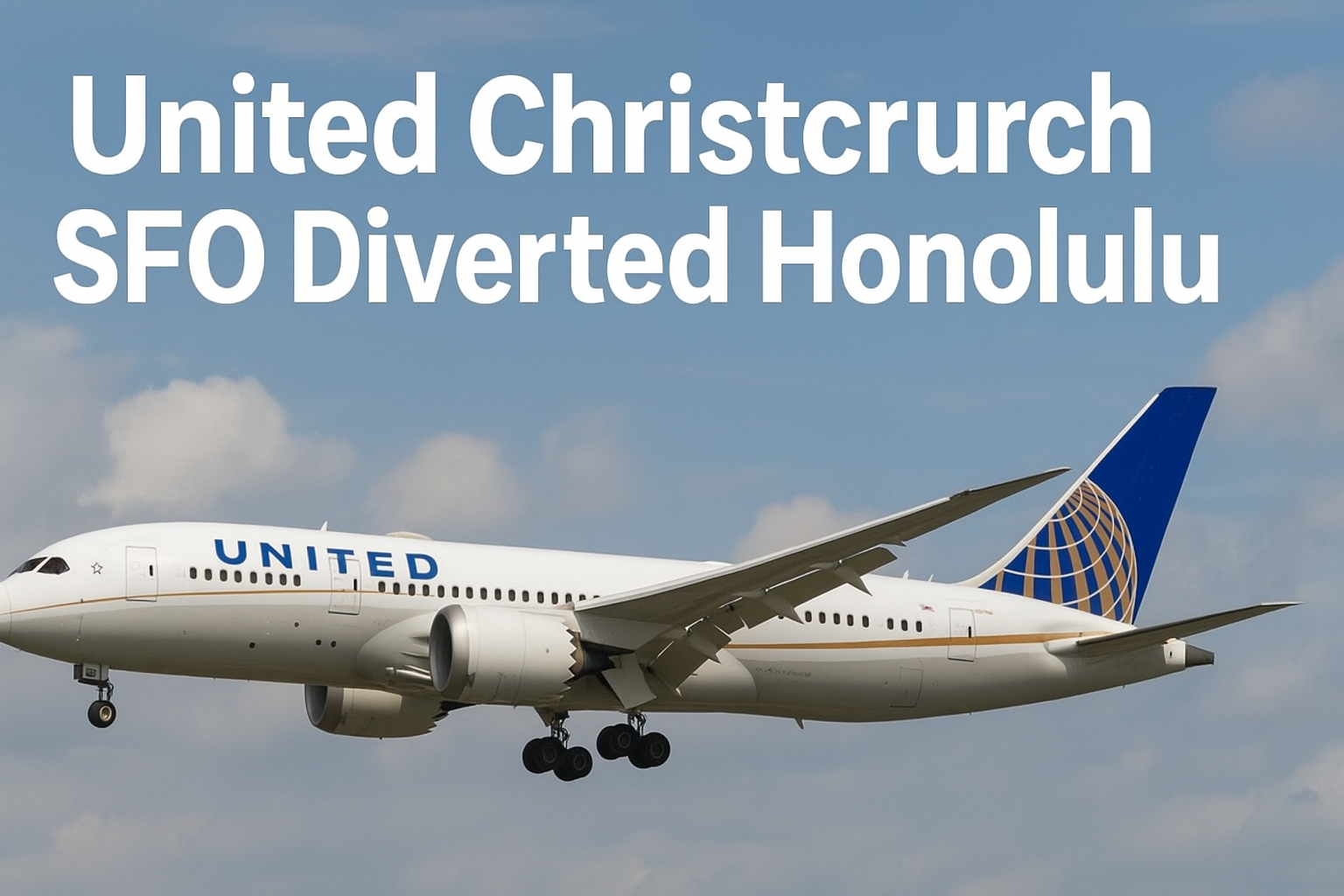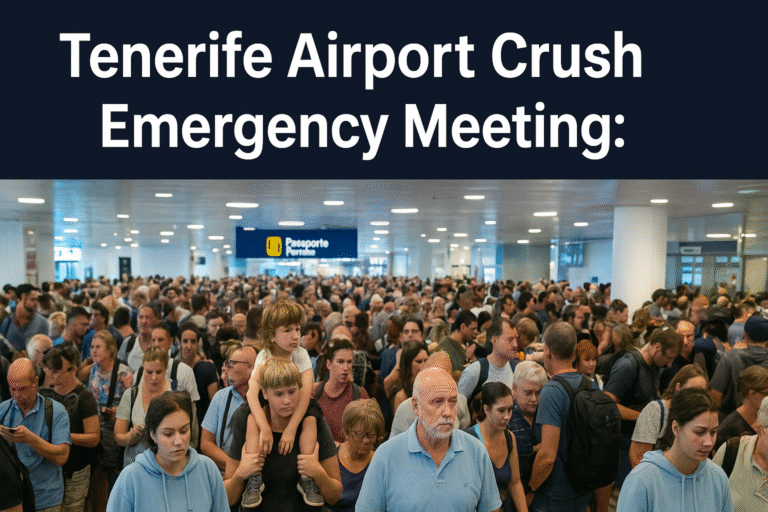
In the world of aviation, even the most carefully planned flights can face unexpected turns. The incident known as United Christchurch SFO Diverted Honolulu has captured global attention as travelers and aviation enthusiasts alike try to understand what led to a long-haul United Airlines flight from Christchurch, New Zealand, to San Francisco, California, being unexpectedly diverted to Honolulu, Hawaii.
While flight diversions are not unusual, they are rare on transpacific routes, especially for a well-established airline like United. This case provides a fascinating glimpse into how airline operations, safety regulations, and real-world logistics come together when a long-haul flight cannot complete its journey as planned. In this article, we’ll explore every detail of the United Christchurch SFO Diverted Honolulu event—its causes, effects, and what it teaches us about modern air travel.
The Flight Overview
The flight in question was United Airlines Flight UA731, operated on a Boeing 787-8 Dreamliner. It was scheduled to depart from Christchurch International Airport (CHC) and land at San Francisco International Airport (SFO) after a journey of approximately 13 hours and 10 minutes. The route connects New Zealand’s South Island directly to the United States, serving both business travelers and tourists seeking a convenient transpacific connection.
The flight took off on schedule, carrying 203 passengers and 13 crew members. For the first several hours, everything appeared normal. However, mid-journey, the aircraft’s flight path began to shift—air traffic and flight tracking sites noticed that the plane was no longer heading toward California but instead began descending toward Hawaii. Before long, the aircraft safely landed at Daniel K. Inouye International Airport in Honolulu (HNL).
What seemed like a smooth, nonstop flight suddenly became a two-leg journey, and the news spread quickly across social media platforms and travel news outlets, leading to the now widely searched term United Christchurch SFO Diverted Honolulu.
The Reason Behind the Diversion
In aviation, diversions happen for a variety of reasons—medical emergencies, weather conditions, technical issues, or operational restrictions. In this particular case, the cause was related to crew duty time regulations.
Airline pilots and cabin crew are subject to strict flight-time and rest regulations. These rules, enforced by aviation authorities, ensure that no crew member operates an aircraft beyond safe working hours. Fatigue is one of the most serious safety concerns in aviation, and exceeding duty limits can compromise judgment, reaction time, and performance.
United Airlines later confirmed that the Christchurch to San Francisco flight was diverted to Honolulu due to crew duty-time limitations. In simple terms, the crew had reached the maximum number of hours they were legally allowed to work. Continuing the flight to San Francisco would have violated aviation safety laws, so the safest and most compliant decision was to divert to the nearest suitable airport—Honolulu.
While some passengers may have initially assumed there was a mechanical or weather problem, it was actually a precautionary measure to ensure the safety and well-being of everyone on board.
Why Honolulu Was Chosen
Honolulu is a natural diversion point for transpacific flights. It sits roughly halfway between Australasia and the U.S. West Coast, making it an ideal emergency or operational stopover location. United Airlines also has a significant presence in Honolulu, which allowed the airline to manage logistics quickly—such as arranging for new crew members, refueling, and rebooking passengers.
Choosing Honolulu ensured that passengers were brought safely to land in a location with full facilities, maintenance support, and available replacement crew. For an ultra-long route like Christchurch to San Francisco, Honolulu represents one of the few major airports suitable for such an unscheduled stop.
Passenger Experience During the Diversion
When United Christchurch SFO Diverted Honolulu, the sudden change of plans caused confusion and concern among passengers. For many, the first indication of something unusual came when the pilot announced the diversion over the intercom.
After landing, passengers disembarked at Honolulu International Airport, where United’s ground staff assisted them with rebooking and accommodations. The continuation flight from Honolulu to San Francisco was canceled for that aircraft, and a replacement flight was arranged later that day with a fresh crew. The replacement flight, United 3024, departed Honolulu at 1:45 p.m. local time and landed in San Francisco at 9:07 p.m.
While passengers faced delays and extended travel times, United Airlines provided meals, refreshments, and assistance at the terminal. Although some travelers expressed frustration over the unexpected layover, most recognized that safety and regulatory compliance were paramount.
Operational Challenges in Long-Haul Flights
The United Christchurch SFO Diverted Honolulu case highlights the complex logistics of managing ultra-long-haul flights. These flights require meticulous coordination between air traffic controllers, dispatchers, flight operations, and crew scheduling teams.
Crew duty regulations are especially challenging on flights lasting over 12 hours, where unforeseen factors such as strong headwinds, airspace congestion, or small delays on departure can extend total duty time. If the crew’s work hours approach the maximum allowed limit, airlines must make quick operational decisions to comply with regulations.
In this case, United Airlines made the correct choice by diverting to Honolulu rather than risking a regulatory violation or compromising safety. Such decisions, while inconvenient for travelers, demonstrate the airline’s commitment to operating responsibly.
The Broader Impact on the Airline and Industry
Events like United Christchurch SFO Diverted Honolulu have implications beyond a single flight. They reveal the challenges airlines face as they expand into longer nonstop routes connecting distant destinations.
Ultra-long-haul flights are appealing to passengers seeking convenience, but they also push the limits of human endurance and aircraft scheduling. To manage these routes effectively, airlines must build in operational flexibility—ensuring that backup crews or diversion strategies are in place when things don’t go as planned.
For the aviation industry, this event serves as a case study in the importance of safety-first decision-making. Airlines must continuously balance cost efficiency, crew welfare, and passenger satisfaction.
Lessons for Passengers
While diversions like United Christchurch SFO Diverted Honolulu are rare, they offer valuable lessons for travelers:
-
Expect the unexpected. Even with modern aircraft and advanced planning, diversions can happen for safety or operational reasons.
-
Keep essentials in your carry-on. Medications, chargers, and a change of clothes can make an unexpected stopover more comfortable.
-
Stay calm and patient. Flight crews and airline staff work hard to ensure passenger safety and comfort during unexpected events.
-
Know your rights. Airlines are obligated to assist passengers in the event of diversions or cancellations, offering rebooking and accommodations as needed.
By understanding how airlines handle such situations, passengers can respond with patience and awareness instead of frustration.
The Human Side of Aviation
Beyond the operational details, United Christchurch SFO Diverted Honolulu is a reminder that aviation remains a deeply human industry. Pilots, flight attendants, dispatchers, and ground staff make complex decisions under pressure to keep passengers safe.
The diversion showcased teamwork between flight crews and operations control. It also demonstrated transparency, as United Airlines promptly communicated the reason for the diversion to the public and to passengers. In an era when social media can quickly spread misinformation, honest communication is essential to maintaining trust.
Read also: http://haceryver.com
Conclusion
The story of United Christchurch SFO Diverted Honolulu stands as a fascinating example of how global aviation operates under strict safety principles. While the diversion disrupted travel plans for hundreds of passengers, it also underscored the industry’s commitment to following safety rules, no matter how inconvenient.
Flight diversions like this remind us that aviation, despite its technological sophistication, is guided by one unwavering priority: the safety of everyone on board. United Airlines’ decision to divert was not a sign of failure but of professionalism and responsibility.
In the end, all passengers reached their destination safely—an outcome that matters far more than timetables or convenience. The event will remain a case study in how modern airlines manage long-haul operations and uphold their duty to protect lives, even when the skies take an unexpected turn.




